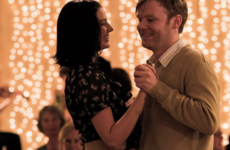THE OLD SAYING goes: fool me once, shame on you. Fool me twice, shame on me.
At one stage or another,everyone has been the victim of the odd trick or two – and equally, we’ve all broken out the whoopee cushion for April Fools. But some of us like to take pranks more seriously.
A lot more seriously.
Hoaxes are pranks on a larger scale, intended to induce panic or suspend disbelief. Here are some of the best hoaxes in history.
1. Mary Toft
Mary Toft was an English woman who caused quite a stir in the early 1700s by tricking doctors into believing she had given birth to rabbits. Yes, rabbits.
Image: via Wikimedia Commons
Mary fooled many prominent doctors - and she was referred to so many that she was eventually seen by the surgeon to the Royal Household of George I, who concluded that her case was genuine.
After Mary revealed she had been making the whole thing up, there was egg on the faces of the many distinguished medics who had confirmed her rabbit pregnancy. The medical profession was mocked by social satirists and critics and several careers were ruined. Mary was arrested and accused of fraud, but eventually released and allowed to return home with no charge.
2. The kid-snatching golden eagle
Last year, a video seemingly showing a golden eagle snatching up a toddler went viral. The video, below, has almost 42 million views to date.
YouTube/MrNuclearCat
However, about a day after the internet spread like wildfire across the internet, students from the Centre NAD in Montreal admitted it was a hoax. They were animation students, and had created the video by overlaying video footage. It had been made as part of a simulation workshop class.
Hoax aside, we bet they aced that course.
3. Bonsai kittens
You might remember the constant chain e-mails, urging you to act against the devastatingly cruel practice of putting kittens into glass jars to mould them into “Bonsai kittens”.
Image: via The Featured Creature
In fact, BonsaiKittens.com was entirely fictitious and no cats were ever harmed. The ruse was all the work of an MIT student, going by the alias of Dr Michael Wong Chang. Many individuals worldwide fell for the hoax, passed on the chain letter and complained to animal rights groups.
Did you fall victim to the faked Bonsai kitten outrage?
4. The Cottingley fairies
The Cottingley fairies appear in 5 photographs taken by two cousins, Elsie Wright and Francis Griffiths, in 1917. The photos came to the attention of Sherlock Holmes author, Sir Arthur Conan Doyle, a devoted Spiritualist who believed in psychic and supernatural phenomena.
Image: via Wikimedia Commons
Conan Doyle used the pictures to illustrate a magazine article on fairies he had written. Reaction was divided, with many sceptical, but some also believing the photographs to be genuine (including Elsie’s mother).
It was not until the 1980s that the two women admitted the fairies had been faked by using cardboard cut-outs from books. However, they disagreed over the fifth and final photograph – with Frances continuing to insist it was real.
5. Paul McCartney is actually dead
“Paul is dead” is an urban legend that has been around since 1969 – undeterred by the indisputable evidence that Paul McCartney is, in fact, very much alive today.
Image: via Turn Me On Dead Man
There’s a wealth of supposed “evidence” out there supporting the theory that Paul McCartney died in a car crash and was replaced by a canny lookalike to fool the fans. However, it’s all part of a hoax theory that originated in a college newspaper of the time.
Paul claimed himself in 1969 that the rumour was borne out of him seeking less press attention, yet nonetheless the (real, alive) McCartney is still on our screens and airwaves as much today.
6. The War of the Worlds
The most infamous hoax of all wasn’t really one at all, in that it was entirely unintentional. With his 1938 radio broadcast of the adapted drama The War of the Worlds, Orson Welles didn’t intend to alarm anyone.
Image: via Sceptical Teacher
However, many listeners who tuned into the alien invasion themed programme took it for a real news report rather than fiction. There was widespread panic and outrage after the broadcast, with the public feeling that they had been deliberately deceived.
But what if Orson Welles had been telling the truth? In recent years, we’ve all seen TV footage of massive tsunamis, terrorist attacks and global flu epidemics. What if we reporters told us zombies were real? And they actually were?
That’s the premise of forthcoming blockbuster World War Z, a story of a United Nations employee (played by Brad Pitt) who travels the globe trying to find a cure for the zombie pandemic. And it’s not fiction for Brad this time. World War Z hits cinemas on June 2, 2013.
















COMMENTS